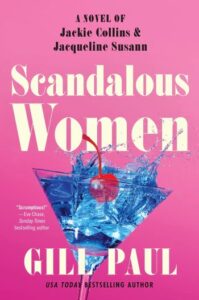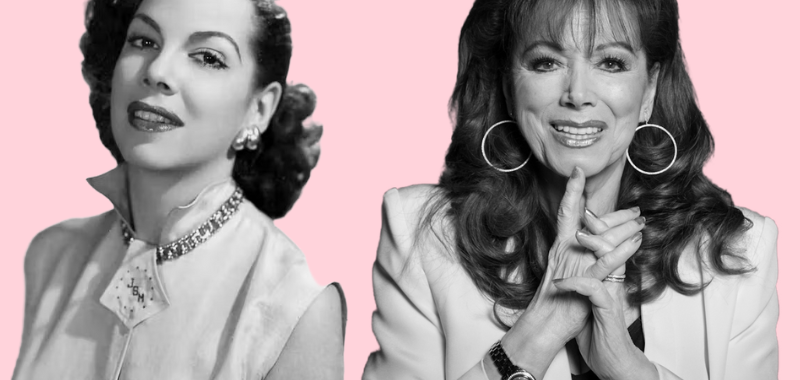During the Sixties, book publishing, like the rest of the country, was undergoing an upheaval. That venerable industry was at the beginning of a dramatic changing of the guard that would affect the staff they hired, the authors they published, and the way books were marketed to the reading public. And at the heart of it there were two trailblazing women, Jacqueline Susann and Jackie Collins.
Article continues after advertisement
In previous decades, publishing had been a refined gentleman’s business, peopled by well-educated men of independent means—figures such as Bennett Cerf, Horace Liveright, and Alfred A. Knopf who cared about Literature with a capital L. Knopf famously declared that he intended to publish “the best literature, whether it sold or not.” They acted on hunches, made deals over long lunches, and worked with authors to develop their long-term careers, even if their earliest books flopped.
Both Susann and Collins wrote about strong women with their own careers, who took control in the boardroom as in the bedroom.
Then, in 1959, the money men of Wall Street, sniffing around for the next bonanza, alighted on books. When Alfred A. Knopf’s company was absorbed into Random House in 1960, it was only the first of a series of mergers and acquisitions that would transform publishing from a career for literary gentlemen into a corporate money-making machine.
As an immediate result of the M&As, publishers had more cash to wave around, so they could offer big advances to authors whom they guessed (and it was largely guesswork) would be capable of delivering big sales. To find them, they began to rely on agents, who pushed the prices even higher. The corporate honchos wanted fast returns on their big bucks, so the books had to be what became known as ‘blockbusters’—incidentally, a term that originated during the war for bombs capable of destroying entire blocks.
Enter Jacqueline Susann. She knew exactly what she was doing when she wrote Valley of the Dolls, a thick, gossipy novel, which contained scenes of drug abuse and ‘kinky’ sex, and had leading characters said to have been based on famous actresses of the day (Judy Garland, Ethel Merman, and Carole Landis). Her sex is pretty tame compared to later bestsellers like Fifty Shades, but it was radical for its time. Legal judgements on previously banned books Lady Chatterley’s Lover (1959) and Tropic of Cancer (1964) had established that the courts did not have the right to suppress a book so long as it had literary merit.
Jacqueline Susann and, a couple of years later, Jackie Collins, were inspired by the sexy soap opera-style novels being produced by Harold Robbins, to great sales if not great reviews. “My only criticism of his books,” Collins said, “Was that his women were either in the kitchen or the bedroom.” Both Susann and Collins wrote about strong women with their own careers, who took control in the boardroom as in the bedroom, and demanded athletic performances from their men. Their subjects weren’t ladylike; they were raw and honest and sometimes the stories ended in tears, reflecting the way women’s real lives were being transformed but adding a splash of aspirational glamour.
Susann had a background in film acting and television advertising, and she was married to a publicist, so she didn’t need to rely on her publisher (a small operation called Bernie Geis Associates) to promote the book. The print reviews of Valley of the Dolls were dire (“a highly effective sedative” said Time Magazine) so she resolved to bypass snooty critics and reach out directly to readers.
Her husband’s contacts helped her to get on television chat shows like the popular Tonight Show with Johnny Carson, which regularly reached ten million viewers, and she proved a lively and opinionated guest. She also invented the author’s book tour, making appearances in bookstores from coast to coast, signing copies of Dolls and chatting directly with what she called ‘her people.’ She befriended booksellers wherever she went, bearing gifts, signing personalized copies of her book for them, and even taking trays of Danish pastries to the truckers delivering pallets of her books from warehouse to store.
Her efforts paid off when Valley of the Dolls hit the New York Times bestseller list and made number one in May 1966, staying there for an exceptional twenty-eight consecutive weeks. Her next two books also made number one, creating a record no author has equalled since. The publicity model she created became a gold standard for book publicists as it became clear that readers felt more brand loyalty to authors they had met in person.
Jackie Collins, whose first novel The World is Full of Married Men was published two years after Dolls, followed Ms. Susann’s lead in making personal appearances in bookstores and giving sparkly performances on television and radio chat shows. Their visibility made them targets of abuse, for daring to write about sexually liberated women. It came from all quarters: from the literary critics, who accused them of undermining the great temple of literature, from conservative and religious members of the public, who deluged them with sackfuls of vitriolic complaint, and from feminists, who accused them of a lack of sisterhood. But still their books sold in the tens of millions.
[Susann and Collins] showed us how to write entertaining books about women’s lives, and they showed us how to sell them.
It was partly due to the two Jackies that publishers finally clocked there was a vast female audience for novels—and that they didn’t want challenging literary works from pompous white men. They wanted to be entertained by stories about women who faced similar life crises to them, and the best people to write those stories were other women.
Back in 1960, only 18 per cent of all books published in the US were written by women but, as publishers cottoned onto their female audience, strategies began to change: by 1970, a third of all books were by women and by 2021 that had risen to 50.45%. The divide is even starker in fiction: today, roughly three-quarters of published novels are written by women and roughly 80 per cent of fiction readers are women. There’s still a long way to go in terms of diversity, but novels by people of different social and ethnic backgrounds and sexual orientation are increasingly being championed by publishers.
While they were looking for female authors for a female readership, publishers were forced to reflect on the fact that their in-house decision-makers were almost exclusively male. If women were employed at all, it was in low-paid secretarial posts where they could use their home-maker skills to bring tea for the boys. Gradually, a few women managed to manuver themselves from clerical to editorial positions but they were still excluded from the upper echelons of management, and equal pay was a distant pipe dream. The transformation took decades but now, women form the majority of the workforce in publishing: 78 per cent of editorial staff are female and 92% of publicists, according to a 2021 UK Publishers’ Association diversity study—though most of them are still white and cisgender. And on average they are paid less than employees in other communication industries.
Publishing is constantly evolving and seems likely to become more diverse in future; it’s unthinkable that it would ever revert to an exclusive gentleman’s club. And among the people responsible for this change were Jacqueline Susann and Jackie Collins.
They’ve been much imitated—there’s nothing publishers like so much as a repeat of last year’s bestseller—but they were the first, raising their heads above the parapet and clearing the way for every women novelist who came after them. They showed us how to write entertaining books about women’s lives, and they showed us how to sell them. As a novelist who used to work in publishing, I owe them a huge debt of gratitude.
__________________________________

Scandalous Women: A Novel of Jackie Collins and Jacqueline Susann by Gill Paul is available from William Morrow, an imprint of HarperCollins Publishers.

